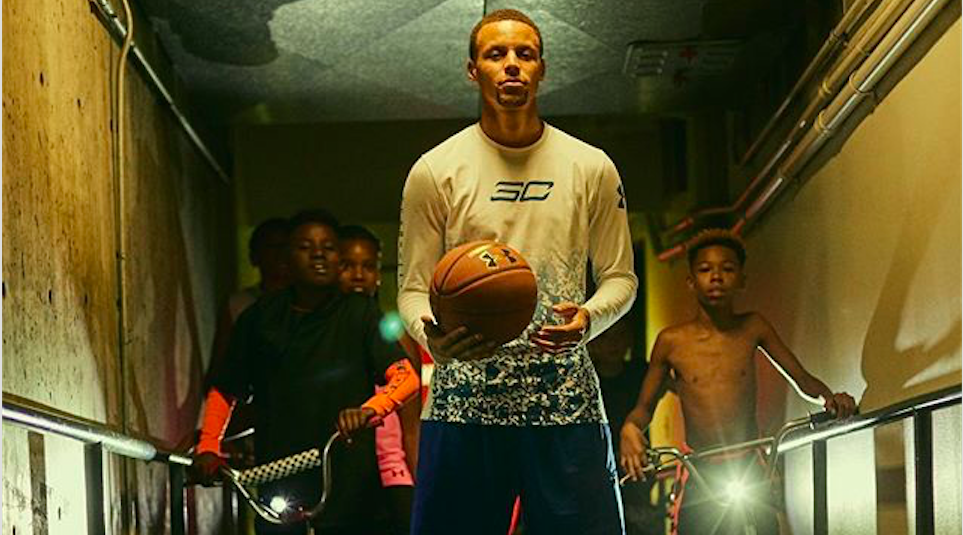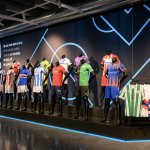Hurt by heightened price competition on its basic technical apparel as well as admitted shortcomings in its more fashion-oriented offerings, Under Armour reported fourth-quarter results that came in short of Wall Street targets and provided a bleak outlook for 2017.
Shares of Under Armour tumbled $5.87, or 23.4 percent, to $19.22 Tuesday on the New York Stock Exchange – its biggest one-day decline in nine years.
In the fourth quarter, total sales grew 11.8 percent to $1.31 billion, well below Wall Street’s average target of $1.41 billion.
The quarter, which was impacted by the lingering effects of the bankruptcy of Sports Authority and overall promotional holiday selling period, marked the first time in 26 quarters that Under Armour didn’t see top-line growth greater than 20 percent. What was more surprising was that Under Armour doesn’t expect much of a rebound this year, predicting growth of 11 to 12 percent.
Under Armour further sees a $100 million drop in operating income in 2017 as its SG&A spend can’t be reduced quickly enough to match the revenue shortfall and the company continues to make infrastructure investments to support a goal of doubling its sales to $10 billion.
On a conference call with analysts, Kevin Plank, CEO, noted that the company had been optimistic when it reported third-quarter results in October about meeting its full-year targets due to a “very strong” back-to-school season.
But in the fourth quarter, “slower traffic caused significant promotional activities earlier, deeper and broader than expected,” said Plank. “This commoditized some of our more basic core product that had previously sold through for us in years past. This, in addition to higher demand for more lifestyle silhouettes, caused us to be out of balance with our assortment. So we lost top line volume as we work to adapt through our mix and pricing.”
While comps grew at both its retail stores and e-commerce channel, sales wound up below plan. Plank also said the company had expected lost market share from the liquidations last year would be absorbed by other channels, but “pricing came down in the points of distribution that we serve.” Finally, its cold-weather product assortment didn’t sell through at full price as it traditionally had done.
To revive top-line growth, Under Armour will be working on further differentiating its basic core product “to better cut through the noise,” sharpening its segmentation strategies and making sure its largest volume drivers have compelling product stories at key points in each season. Said Plank, “This means amplifying our agenda for newness and innovation at every price point as our partners expect Under Armour to be the premium brand of choice in their stores.”
The company is also accelerating its lifestyle product offering to capture broader demand and working within its new category management structure to improve on-floor merchandising efforts.”
Plank noted that although its women’s offerings surpassed $1 billion last year, the gains have been largely driven by performance-based rather than taking advantage of the athleisure trend. Said Plank, “We think there’s a tremendous opportunity and the broader investment the company is making around things like lifestyle are really going to pay dividends for us there.”
But Plank also feels Under Armour has to do a better job coming up with product to serve multiple occasions overall with many competitors going after the active lifestyle space. Stated Plank, “We need to become more fashionable with the products that we have out there.”
He said that even Under Armour’s core basics have to stand out more. He added, “The consumer today frankly has more options, and frankly most of those options are from good brands that we compete with, that are heavily discounting as well.”
At the same time, Plank noted the company will continue to invest in its fastest-growing areas – footwear, international and DTC. Over the last five years, the CAGR for these businesses included footwear, 41 percent; international, 53 percent; and DTC, 31 percent. Plank noted that building scale in these businesses will help make Under Armour “better positioned to deal with imbalances like this going forward.”
Indeed, Plank said that despite the muted sales outlook for the year ahead, the company remains a growth story. He added, “Our brand is truly stronger than it’s ever been, and we are actively managing our growth.”
Continued investments going forward supporting growth beyond adding talent include SAP’s enterprise resource planning platform, Connected Fitness and its merchandising capabilities.
He implied that Under Armour has no plans to reduce its investments in its Connected Fitness platform given the ongoing shift to digital retailing and communications. He stated, “I don’t know if anyone can invest heavily enough in digital right now and what that footprint’s going to look like.”
The brand will also continue to learn from lessons in category management it began in 2016 and invest in Under Armour distribution houses to support international expansion.
Still, given the newer challenges as it grows, it’s taking steps across its organization to streamline processes and re-prioritize opportunities to build a stronger, leaner and more responsive organization.
Said Plank, “As we pass through $5 billion on our way to $10 billion, we must get better, faster and smarter at what we do, why we do it and how we do it.”
In the fourth quarter, apparel sales advanced 7.3 percent to $928.5 million, missing plan, although strong results were seen in sports categories, including golf and basketball. Footwear gained 36.4 percent to $227.7 million, helped by the acceptance of premium offerings in running and basketball.
Accessories sales were up 7.4 percent to $104.3 million with the aid of “solid results” in bags and headwear, while licensing revenues gained 20.4 percent to $29.9 million.
By channel, wholesale revenues improved 5 percent to $742 million while direct-to-consumer revenues jumped 23 percent to $518 million.
North American revenues grew 5.9 percent to $1.08 billion. Operating income in the North America segment fell 15 percent to $160.2 million. Company officials noted that its North American apparel business remains its largest and most profitable business and the underperformance consequently had a disproportionate impact on overall results in the quarter.
International revenues gained 55.2 percent to $215.3 million and were up 60 percent on a currency-neutral basis. The overseas gains were driven by significant growth in the U.K., Germany, China and Australia. Asia was particularly strong. Operating income in the International segment more than tripled to $10.9 million from $2.8 million.
Sales in the Connected Fitness segment gained 7.6 percent to $18.3 million. The segment reduced its loss to $4.3 million from $13.6 million.
Companywide gross margins in the latest quarter eroded to 44.8 percent compared with 48 percent in the prior year’s period. About 230 basis points of the contraction was due to higher discounts and promotions to manage inventory that offset continued improvement in product input costs. The remaining 90 basis points of decline was attributed to the continued strength in footwear and international, which carry lower margins versus the apparel and North American businesses.
SG&A expenses grew 9 percent to $420 million, but were down 70 basis points as a percent of sales to 32.1 percent. The net increase reflects continued investments in DTC, including physical stores and digital, as well as investments in its infrastructure to support growth initiatives.
Operating income declined 6.1 percent to $166.8 million. Net income was down 0.7 percent to $104.9 million, or 24 cents a share, missing Wall Street’s target of 25 cents.
For the full year, revenues in 2016 were up 21.8 percent to $4.83 billion and gained 23 percent on a currency-neutral basis. Operating earnings improved 2.9 percent to $420.3 million. When it reported third-quarter results on October 25, it had said it continued to expect 2016 revenues of approximately $4.93 billion, representing growth of 24 percent over 2015, and operating income of $440 million to $445 million, representing growth of 8 to 9 percent over 2015.
Net income in 2016 rose 11.2 percent to $258.7 million, or 71 cents a share.
For the current year, net revenues are expected to grow 11 to 12 percent to reach nearly $5.4 billion with a gain of 12 to 13 percent on a currency-neutral basis. Wall Street analysts had been forecasting $6.06 billion.
Gross margin is expected to be slightly down compared to the prior year, with benefits in product costs being offset by continued pressure from changes in foreign currency and sales mix, as the footwear and international businesses continue to outpace the growth of the higher-margin apparel and North American businesses. Tempered top-line results coupled with strategic investments in the company’s fastest-growing businesses are expected to cause a decline in operating income to approximately $320 million from $420 million.
David Bergman, SVP, corporate finance, said that while much of the investments in 2017 will focus on building “infrastructure capabilities to support a $10 billion company.” Those costs will only be partially offset by steps officials are taking to reassess its overall cost structure “with a focus on streamlining and removing complexities” while protecting growth investments. Already beginning the process, Under Armour said it expects capital expenditures this year to reach $400 million, which Bergman said represents a “significant reduction” from the target laid out at its last Investor Day.
For the first quarter, Under Armour expects sales to rise in the mid single digits, with the same issues impacting Q4 top-line growth expected to continue. The company will also not yet fully anniversary the impact of last year’s significant bankruptcies.
Gross margins in the first quarter are expected to be down 100 basis points, again reflecting many of the same Q4 issues. As a result, the company expects to show an operating loss in the range of $12 million to $14 million in the period.
Photo courtesy Under Armour
















